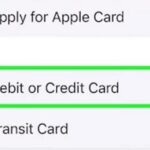Insurance is a crucial aspect of modern life, safeguarding us against unforeseen events. However, when accidents involve uninsured drivers, the situation becomes complex. This article dives deep into how insurance companies pursue uninsured drivers, ensuring that you’re well-informed and prepared.
Key Takeaways
- Insurance companies use several methods to recover costs from uninsured drivers.
- Legal action and uninsured motorist coverage are key tools in this process.
- Understanding these mechanisms is essential for both insured and uninsured drivers.
How Do Insurance Companies Go After Uninsured Drivers?
Insurance companies pursue uninsured drivers through a combination of legal actions, financial recovery processes, and collaboration with law enforcement and state motor vehicle departments.

They may file lawsuits to recover damages, use the subrogation process to seek reimbursement and negotiate settlements. Additionally, insurance companies report unpaid debts to credit agencies, impacting the credit scores of uninsured drivers.
They also collaborate with state authorities to enforce penalties like suspension of licenses and vehicle registrations. These strategies are designed to mitigate financial losses and ensure that responsible parties are held accountable.
Understanding the Challenge of Uninsured Drivers
The presence of uninsured drivers on the road poses a significant challenge. When an accident occurs, and one party lacks insurance, the financial and legal repercussions can be severe. Insurance companies play a pivotal role in navigating these complex situations.
Strategies Insurance Companies Use Against Uninsured Drivers
Insurance companies have developed several strategies to handle uninsured drivers. These strategies are designed to minimize financial losses and ensure that responsible parties are held accountable.
Legal Actions and Litigation
One of the primary methods insurance companies employ is legal action. When an uninsured driver causes an accident, insurance companies often resort to lawsuits to recover damages. This legal process can be lengthy and involves various steps, from filing a lawsuit to actual court proceedings.
Uninsured Motorist Coverage
Uninsured motorist coverage is a policy add-on that provides protection when an insured driver encounters an uninsured one. This coverage ensures that the insured driver’s expenses, such as medical bills and car repairs, are covered, even when the at-fault party lacks insurance.
The Impact of State Laws on Insurance Claims
State laws play a crucial role in how insurance companies deal with uninsured drivers. Each state has its own set of regulations, affecting everything from the pursuit of uninsured drivers to the settlement of claims.

Variation in State Regulations
State laws vary significantly in terms of insurance requirements and penalties for driving without insurance. These variations impact how insurance companies approach uninsured drivers in different jurisdictions.
No-Fault Insurance States
In no-fault insurance states, the approach to uninsured drivers is different. Here, each party’s insurance company covers their own policyholder’s damages, regardless of who is at fault. This system changes the dynamics of how insurance companies pursue uninsured drivers.
Collaboration with Law Enforcement
Insurance companies often collaborate with law enforcement to address the issue of uninsured drivers. This cooperation helps in identifying and penalizing uninsured drivers, ultimately contributing to road safety.
Role of Law Enforcement
Law enforcement agencies play a critical role in enforcing insurance laws. They verify insurance coverage during traffic stops and accidents, helping to identify uninsured drivers.
Data Sharing and Reporting
Insurance companies and law enforcement agencies share data regarding uninsured drivers. This cooperation aids in tracking and penalizing these drivers, enhancing overall compliance with insurance laws.
Technological Advances in Tracking Uninsured Drivers
Technology has revolutionized how insurance companies track and manage uninsured drivers. Advanced databases and analytics tools have made it easier to identify and pursue uninsured motorists.

Use of Databases
Insurance companies use comprehensive databases to monitor insurance coverage. These databases are instrumental in quickly identifying uninsured drivers involved in accidents.
Analytics and Risk Assessment
Advanced analytics enable insurance companies to assess the risk associated with uninsured drivers. This technology aids in developing strategies to mitigate financial losses and improve recovery processes.
Educational and Awareness Campaigns
Insurance companies invest in educational and awareness campaigns to highlight the importance of insurance and the risks associated with driving uninsured. These initiatives aim to reduce the number of uninsured drivers on the road.
Importance of Public Awareness
Raising public awareness about the consequences of driving without insurance is crucial. These campaigns educate drivers about legal penalties and the financial risks of being uninsured.
Impact on Insurance Compliance
Through these educational efforts, insurance companies aim to increase compliance with insurance requirements. This, in turn, reduces the burden of dealing with uninsured drivers and enhances road safety.
Financial Recovery Processes
Beyond litigation and uninsured motorist coverage, insurance companies have established financial recovery processes to recoup losses from uninsured drivers.
Subrogation Process
Subrogation is a key tool in an insurer’s arsenal. When an insurance company pays for damages caused by an uninsured driver, they acquire the right to pursue reimbursement from the at-fault party. This process involves legal steps to ensure that the uninsured driver compensates for the costs incurred.
Negotiations and Settlements
In many cases, insurance companies engage in negotiations with uninsured drivers to settle claims. These negotiations aim for a settlement that recovers costs without escalating to lengthy court proceedings. The ability to negotiate effectively is crucial for insurance companies in managing these situations.
Role of Credit Reporting
Insurance companies increasingly use credit reporting as a method to incentivize uninsured drivers to fulfill their financial obligations.

Reporting Unpaid Debts
When uninsured drivers fail to pay for damages they’ve caused, this non-payment can be reported to credit agencies. Such actions negatively impact the uninsured driver’s credit score, serving as a deterrent against driving without insurance.
Implications for Uninsured Drivers
The impact on credit scores can have long-term consequences for uninsured drivers, affecting their ability to obtain loans, credit cards, and even impacting employment opportunities. This method serves as a powerful tool for insurance companies to encourage compliance with insurance laws.
Collaboration with State Motor Vehicle Departments
Insurance companies work closely with state motor vehicle departments to manage the issue of uninsured drivers effectively.
Suspension of Licenses and Registrations
State motor vehicle departments have the authority to suspend the licenses and registrations of uninsured drivers. Insurance companies report incidents involving uninsured drivers to these departments, triggering administrative actions.
Reinforcement of Insurance Requirements
This collaboration underscores the importance of maintaining valid auto insurance and adheres to state laws. The threat of losing driving privileges acts as a strong deterrent against driving uninsured.
Advanced Risk Management Techniques
Insurance companies are increasingly turning to sophisticated risk management techniques to handle the uninsured driver problem.
Predictive Modeling
By employing predictive modeling, insurers can identify areas and demographics with higher incidences of uninsured drivers. This information allows them to adjust their policies and rates accordingly, mitigating potential losses.
Enhanced Underwriting Criteria
Insurers are refining their underwriting criteria to factor in the risks associated with uninsured drivers. By doing so, they can price policies more accurately, ensuring that the costs associated with uninsured drivers are appropriately accounted for.
Conclusion
In conclusion, insurance companies adopt a multifaceted approach to tackle the issue of uninsured drivers. From legal actions to leveraging technology and public awareness campaigns, these strategies aim to protect insured drivers and uphold the integrity of the insurance system. Understanding these mechanisms is essential, whether you’re an insured driver seeking protection or an uninsured motorist facing potential consequences.
People Also Ask
How does uninsured motorist coverage protect me?
Uninsured motorist coverage protects you by covering expenses like medical bills and car repairs if you’re involved in an accident with an uninsured driver. This coverage is especially important in states with high rates of uninsured drivers.
What role do state laws play in dealing with uninsured drivers?
State laws determine the requirements for auto insurance and the penalties for driving uninsured. These laws influence how insurance companies and law enforcement agencies deal with uninsured drivers.
Are there any alternatives for uninsured drivers to cover accident costs?
Uninsured drivers might negotiate payment plans with the
company or explore state-specific programs that offer alternatives. However, these options are limited and not a substitute for proper insurance coverage.
Can driving uninsured affect my credit score?
Yes, if you’re an uninsured driver responsible for an accident and fail to pay the damages, this non-payment can be reported to credit agencies, negatively impacting your credit score.
A multifaceted professional, Muhammad Daim seamlessly blends his expertise as an accountant at a local agency with his prowess in digital marketing. With a keen eye for financial details and a modern approach to online strategies, Daim offers invaluable financial advice rooted in years of experience. His unique combination of skills positions him at the intersection of traditional finance and the evolving digital landscape, making him a sought-after expert in both domains. Whether it’s navigating the intricacies of financial statements or crafting impactful digital marketing campaigns, Daim’s holistic approach ensures that his clients receive comprehensive solutions tailored to their needs.








